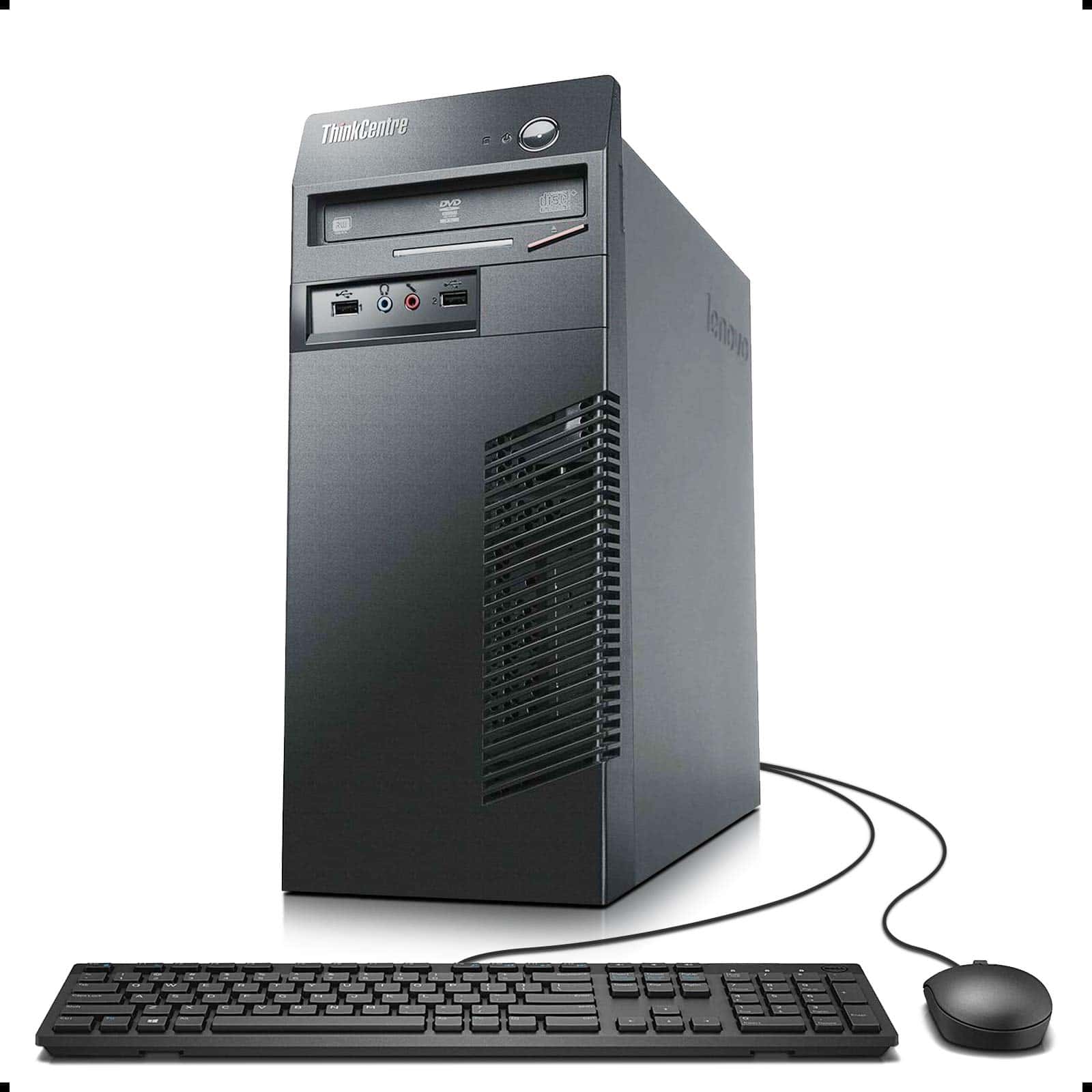Ever faced a broken power button on your PC? Don’t worry. You can still start your computer without pressing the power button using simple methods like keyboard shortcuts or BIOS settings.
Many modern motherboards have built-in power buttons. If yours does, you can use this to boot your PC. For laptops, you might turn on the device using the keyboard. Some BIOS settings let you start your computer when you open the lid or plug in the power cord.
These tricks can save you time and hassle. They’re useful when your power button breaks or if you want a quick way to boot up. Let’s explore more options to get your PC running without that pesky power button.
| Method | Works for | Difficulty |
|---|---|---|
| Motherboard button | Desktop PCs | Easy |
| Keyboard shortcut | Laptops | Medium |
| BIOS setting | Both | Hard |
Options To Power On A PC Without A Power Button
It’s actually possible to turn on your PC without pressing the power button! This can be handy if your power button is broken or you want to start your computer remotely. Here’s how you can do it:
1. BIOS Settings
- Wake-on-LAN (WOL): This is a common feature in most BIOS. It allows you to turn on your PC by sending a “magic packet” over your network.
- Enable WOL in your BIOS settings (usually found under Power Management).
- You’ll need a WOL app or software on another device to send the magic packet.
- Other BIOS Options: Some motherboards offer more options like:
- Keyboard Power On: Turn on your PC by pressing a specific key on your keyboard.
- Mouse Power On: Similar to keyboard power on, but using your mouse.
- Scheduled Power On: Set your PC to turn on automatically at a specific time.
2. Hardware Modifications
- Power Button Jumper: If you’re comfortable opening your PC case, you can usually find a set of pins labeled “PW” or “Power SW” on the motherboard. Shorting these pins with a screwdriver will simulate pressing the power button.
- External Power Switch: For a more permanent solution, you can connect an external power switch to those same “PW” pins on your motherboard. This gives you a physical button outside your PC case.
3. Alternative Methods
- Wake-on-Ring: Some older modems allowed you to turn on your PC with an incoming phone call. This is less common now.
- Wake-on-USB: Some PCs can be woken up by activity on a USB device, like plugging in a mouse or keyboard.
Important Notes:
- Check your motherboard manual: The exact BIOS settings and jumper locations may vary depending on your motherboard model.
- Safety first: If you’re opening your PC case, make sure to unplug it and be careful not to touch any sensitive components.
- Power options: Ensure your PC is set to “Sleep” or “Hibernate” rather than completely shut down for some of these methods to work.
By using these methods, you can turn on your PC without relying on the power button!
Understanding PC Power Requirements
Power supplies and motherboards work together to provide electricity to your computer’s components. Knowing the basics helps troubleshoot issues and operate your PC safely.
Power Supply Basics
A power supply unit (PSU) converts AC power from the wall socket to DC power for your computer. PSUs come in different wattages to meet various system needs. Most modern PCs require 400-750 watts.
PSUs have multiple cables that connect to different parts of your motherboard and components. The main 24-pin connector powers the motherboard. Additional 4 or 8-pin connectors provide extra power to the CPU.
| Connector Type | Purpose |
|---|---|
| 24-pin | Main motherboard power |
| 4/8-pin | CPU power |
| 6/8-pin | GPU power |
| SATA | Storage drives |
Check that all cables are firmly connected. A loose power connection can prevent your PC from starting up properly.
Motherboard Manual Overview
Your motherboard manual contains crucial information about power requirements. It lists the exact connectors needed and their locations on the board.
The manual specifies minimum PSU wattage for your motherboard model. It also details power-related features like:
- Wake-on-LAN settings
- CMOS battery location
- Front panel connector pinouts
These pinouts show how to connect your case’s power button to the motherboard. This knowledge helps if you need to start your PC without the power button.
Review your manual before making changes to power connections. It guides you in safely working with your specific motherboard model.
Alternative Power-On Methods
Several options exist to start your computer without using the power button. These methods leverage built-in settings and external devices to boot up your system.
Using BIOS Settings
BIOS settings offer a convenient way to power on your PC automatically. To access these options:
- Restart your computer and enter BIOS (usually by pressing F2, Del, or Esc during startup)
- Look for “Power Management” or “Boot” settings
- Enable “Power On by RTC Alarm” or similar option
- Set a time for your PC to turn on automatically
This method works well for scheduling regular startups. You can set daily or weekly power-on times to suit your needs.
| BIOS Setting | Function |
|---|---|
| Power On by RTC Alarm | Turns on PC at specified time |
| Resume by Alarm | Wakes PC from sleep/hibernate |
| Power On by PCI-E | Allows network card to turn on PC |
Wake-On-LAN Configuration
Wake-On-LAN (WoL) lets you turn on your PC remotely using a network signal. To set up WoL:
- Enable WoL in BIOS settings
- Configure your network adapter in Windows
- Use a WoL app on another device to send the wake-up signal
This technique is useful for accessing your PC remotely or managing multiple computers in a network.
Power-On by Keyboard or External Device
Many motherboards support powering on via keyboard or USB devices. To use this feature:
- Check your motherboard manual for supported options
- Enable “Power On by Keyboard” or similar setting in BIOS
- Set a specific key combination to turn on your PC
Some systems also allow power-on through mouse movement or clicking. This method provides a quick alternative when your power button is inaccessible or broken.
Manual Power-On Techniques
Several methods exist to power on a computer without using the standard power button. These techniques involve directly interacting with the motherboard or using built-in laptop features.
Identifying Power Switch Pins
To locate the power switch pins, consult your motherboard manual. The pins are typically labeled “PWR_SW” or “POWER SW” on the motherboard. They’re usually found near the front panel connectors.
Look for a group of small pins in the bottom right corner of the motherboard. The power switch pins are often part of this cluster. Once identified, you can use these pins to start your computer manually.
Make sure to handle the motherboard carefully. Static electricity can damage sensitive components. Consider using an anti-static wrist strap for protection.
Using Clamshell Mode on Laptops
Clamshell mode allows you to turn on your laptop by simply opening the lid. This feature is available on many modern laptops but may need to be enabled in BIOS settings.
To activate clamshell mode:
- Restart your laptop and enter BIOS (usually by pressing F2 or Del during startup)
- Look for “Power Management” or “Power Options”
- Find a setting like “Power On By Lid Open” and enable it
- Save changes and exit BIOS
Now, when you open your laptop lid, it should power on automatically. This method is convenient for laptops with faulty power buttons.
Connecting the Pins Directly
If other methods fail, you can start your PC by connecting the power switch pins directly. This technique requires caution to avoid damaging your motherboard.
You’ll need:
- A flathead screwdriver (non-conductive handle)
- Your motherboard manual
Steps:
- Unplug your PC from the power source
- Locate the power switch pins using your manual
- Touch the screwdriver tip to both pins simultaneously
- Hold for 1-2 seconds, then remove the screwdriver
- Your PC should start
| Method | Difficulty | Risk | Requires Opening Case |
|---|---|---|---|
| Identifying Pins | Medium | Low | Yes |
| Clamshell Mode | Easy | None | No |
| Connecting Pins | Hard | Medium | Yes |
Be aware that repeatedly using the screwdriver method may wear out the pins over time. It’s best to repair or replace a faulty power button for long-term use.
Troubleshooting Common Issues
When your PC’s power button fails, several alternatives can get your system running. These methods range from simple hardware fixes to advanced remote options.
Handling a Broken Power Button
A faulty power button doesn’t mean your PC is unusable. You can start your computer without the power button by accessing the motherboard directly. Locate the power switch pins on your motherboard. They’re usually labeled PWR_SW or similar.
Use a small screwdriver or jumper to briefly connect these pins. This mimics pressing the power button. Be careful not to touch other components while doing this.
For laptops, removing the battery and holding the power button for 30 seconds can reset the system. Plug in the charger and try powering on again.
Navigating Power Management Features
Modern PCs offer power management features that can help bypass a broken button. Access your BIOS settings by pressing the appropriate key during startup (often F2 or Del).
Look for options like:
- Wake-on-LAN
- Power-on by RTC Alarm
- Power-on by PCI-E
Enable these features to allow your PC to turn on automatically. Wake-on-LAN lets you start your PC remotely over a network connection.
Set up a scheduled wake time using the RTC Alarm feature. This turns on your PC at a specific time each day.
Deploying Remote Power Options
Remote access tools provide another way to power on your PC without physically pressing a button. TeamViewer offers a Wake-on-LAN feature that can start your computer remotely.
To use this:
- Enable Wake-on-LAN in your BIOS
- Install TeamViewer on your PC
- Configure TeamViewer’s Wake-on-LAN settings
- Use another device to send the wake-up signal
For corporate environments, many IT management tools include remote power-on capabilities. These often work through a network connection or dedicated management hardware.
| Method | Difficulty | Requirements |
|---|---|---|
| Motherboard pins | Easy | Physical access |
| BIOS settings | Medium | BIOS access |
| Remote software | Advanced | Network setup |
Frequently Asked Questions
Several alternative methods exist to power on a PC without using the traditional power button. These options range from keyboard shortcuts to BIOS configurations and remote access solutions.
What alternative methods can I use to power on my computer if the power button is malfunctioning?
You can turn on your PC without the power button by jumping the power pins on the motherboard. Locate the power switch pins using your motherboard manual. Use a screwdriver or jumper cap to briefly connect these pins. This method mimics pressing the power button.
Another option is to use Wake-on-LAN if your network card supports it. Enable this feature in BIOS and use software on another device to send a “magic packet” to start your PC.
Is it possible to start my PC using a keyboard shortcut when the power button is not working?
Yes, many laptops allow you to turn them on using the keyboard. This feature is often disabled by default. To enable it, enter your BIOS settings and look for an option like “Power On By Keyboard” or similar.
Once enabled, you can usually power on your laptop by pressing a specific key or key combination. Common options include the spacebar or Ctrl + Esc.
How can I enable my computer to turn on automatically when the power is restored?
To set your PC to start when power is restored:
- Enter your BIOS settings during startup.
- Look for an option like “After Power Loss” or “AC Power Recovery”.
- Set this option to “Power On” or “Last State”.
This setting is useful for servers or PCs that need to run continuously.
Can I remotely turn on my PC without using the power button?
Yes, you can remotely power on your PC using Wake-on-LAN. This method requires:
- A network card that supports Wake-on-LAN.
- BIOS settings configured to allow it.
- Software on another device to send the wake-up signal.
Some routers also offer this feature, allowing you to turn on your PC through the router’s interface.
What is the process to configure BIOS settings to power on a PC without the power button?
To configure BIOS settings for alternative power-on methods:
- Restart your PC and enter BIOS (usually by pressing Del, F2, or F10 during startup).
- Look for power management or boot options.
- Enable features like “Power On By Keyboard”, “Wake-on-LAN”, or “Power On By RTC Alarm”.
- Save changes and exit BIOS.
Exact steps may vary depending on your motherboard manufacturer.
How can I safely turn off my computer without using the power button?
To safely shut down your PC without the power button:
- Press Windows key + X.
- Select “Shut down or sign out”.
- Choose “Shut down”.
Alternatively, you can use keyboard shortcuts. Press Alt + F4 to open the shut down dialog, then select “Shut down” and press Enter.
| Method | Pros | Cons |
|---|---|---|
| Jumping power pins | Works on all PCs | Requires opening case |
| Wake-on-LAN | Remote activation | Needs network setup |
| Keyboard power-on | Convenient for laptops | Not available on all models |
| BIOS auto-power | Useful for servers | May not be desired for all users |







